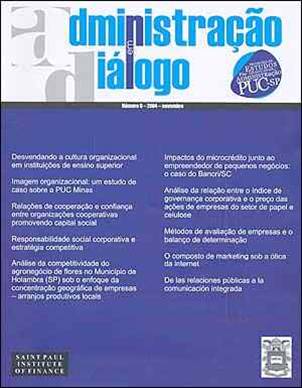Métodos de avaliação de empresas e o balanço de determinação.
DOI:
https://doi.org/10.20946/rad.v6i1.686Abstract
O presente artigo apresenta um estudo sobre métodos de avaliação de empresas, abordando, segundo a literatura de finanças, as principais metodologias, com ênfase no processo de avaliação através do fluxo de caixa descontado, prática esta muito difundida no ambiente empresarial. Em seguida, é apresentado e analisado criticamente face às teorias de finanças, o Balanço de Determinação, que, conforme jurisprudência, tem sido adotado pelos magistrados brasileiros como metodologia de avaliação de empresas e apuração de haveres em processos de cisão e dissolução parcial de sociedades limitadas e sociedades anônimas de capital fechado. Palavras-chave: Avaliação de empresas; fluxo de caixa; balanço de determinação. Abstract: This article presents a study of the main methods of valuing companies, as set forth in the literature, with a special emphasis on discounted cash flow analysis, a widespread practice in the corporate world. The approach known as Special Balance Sheet Analysis is then presented and critically analyzed according to financial theories. In accordance with jurisprudence, this has been adopted by Brazilian magistrates as a method of analyzing and valuing companies and their assets in split-ups and partial dissolution of private limited companies and closed joint-stock companies. Keywords: Valuation, cash flow, special balance sheet analysis.Metrics
Downloads
Published
How to Cite
Issue
Section
License
Authors who publish in this journal agree to the following terms:
1. Authors retain the copyright and grant the journal the right of first publication, with the work licensed simultaneously under a Creative Commons Attribution License after publication, allowing the sharing of work with acknowledgment of the authorship of the work and initial publication in this journal.
2. Authors are authorized to take additional contracts separately, for non-exclusive distribution of the version of the work published in this journal (eg publish in institutional repository or as a book chapter), with acknowledgment of authorship and initial publication in this journal.
3. Authors are allowed and encouraged to publish and distribute their work online (eg in institutional repositories or on their personal page) at any point before or during the editorial process, as this can generate productive changes, as well as increase the and the citation of the published work (See The Effect of Free Access).









